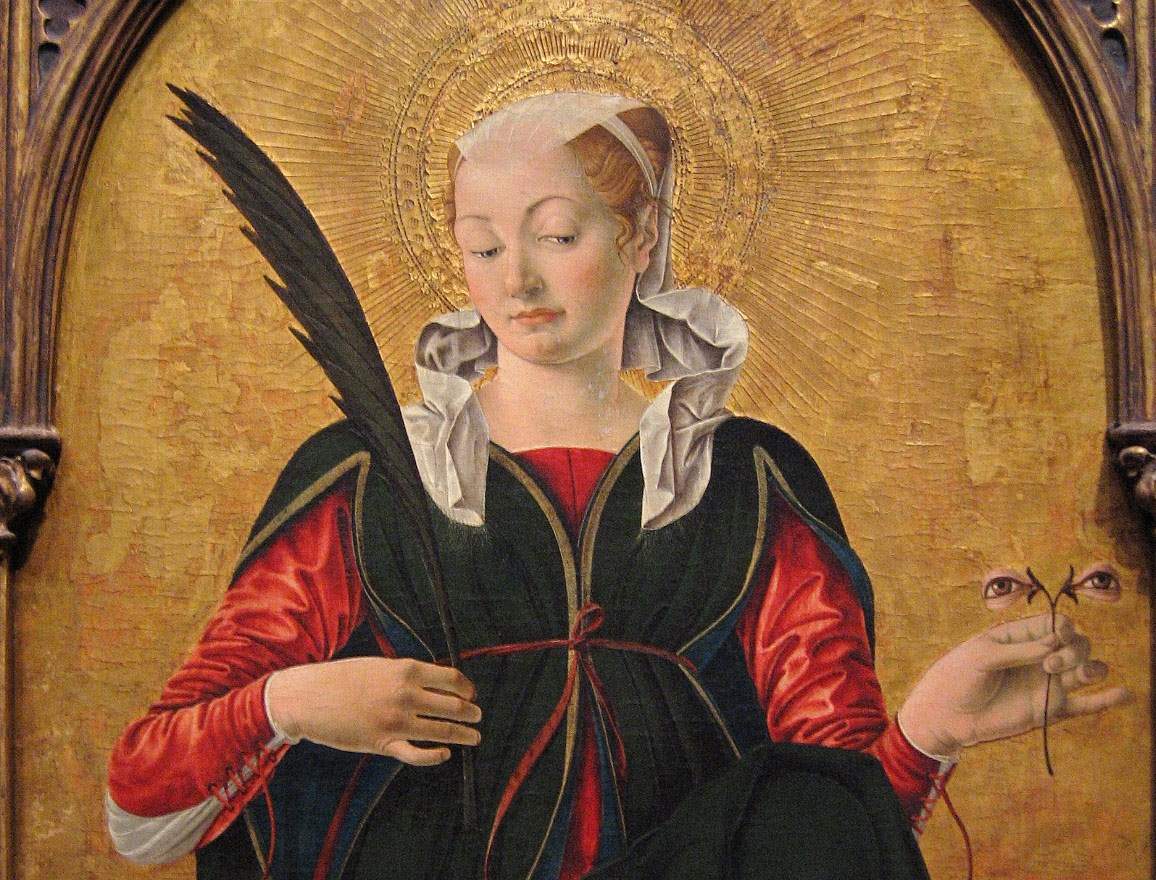Griffoni polyptych, exhibition closes with over 25 thousand visitors and the reproduction will remain in Bologna forever
The exhibition set up at Palazzo Fava in Bologna that reunited after three hundred years the sixteen panels of the Griffoni Polyptych, a Renaissance masterpiece by Francesco del Cossa and Ercole de’ Roberti, has ended. The exhibition, titled The Rediscovery of a Masterpiece, has been called by many “one of the most extraordinary cultural operations of recent years” and has registered more than 25,000 visitors. Actually open to the public since May 18, 2020, the exhibition, amid bans and closures due to the pandemic, was open for 178 days, with as many as two extensions.
The sixteen panels that made up the Polyptych thus return to the museum venues that lent them for the Bolognese exhibition (National Gallery in London, Pinacoteca di Brera in Milan, Louvre in Paris, National Gallery of Art in Washington, Cagnola Collection in Gazzada, Vatican Museums, National Pinacoteca in Ferrara, Museum Boijmans Van Beuningen in Rotterdam, Vittorio Cini Collection in Venice), after more than a year in the halls of Palazzo Fava.
“Since reopening last February 1, hundreds of daily admissions have been counted,” comments Fabio Roversi-Monaco, President of Genus Bononiae. Museums in the City,"an indicator of how much people have a desire to return to acquire real culture. There will remain the pride of having accomplished a complex undertaking that highlights Genus Bononiae as an accredited and authoritative interlocutor of the main international museums and that, in other and happier circumstances, would certainly have contributed to bringing a significant influx of tourists to Bologna. Moreover, the exhibition restored the city to its rightful role in the panorama of Renaissance art and had the merit of reopening a national and international debate on a work of extraordinary importance. The trace of all this will remain at Palazzo Pepoli and, I hope, in the hearts of the Bolognese. Finally, I would like to thank, in addition to the Fondazione Carisbo, all the partners and sponsors of the exhibition, whose support has been invaluable at every stage of the project."
“After the Griffoni Polyptych exhibition, knowledge of Renaissance art in Bologna will never be the same again,” adds Mauro Natale, curator of the exhibition. "Now we can really measure the importance not only of the work, but also the weight and the reasons for its absence in the city’s figurative landscape in the modern era: a unique masterpiece, without a sequel, at the discriminating point between two distinct ways of conceiving depiction and altarpiece. For this reason, too, and thanks to Factum Foundation ’s reproduction, it will be possible to continue the exciting discussion on the original arrangement of the great altarpiece. A few new hypotheses have already been proposed by scholars and will be accessible in the volume of the Proceedings of the study day, which is currently being printed. But the fruits of the exhibition will continue long into the future."
Remaining in Bologna will be the reproduction of the Griffoni Polyptych, which will be placed in the Sacred Room of the Museum of the History of Bologna in Palazzo Pepoli in the spring and, for the next five years, will return in October to the Basilica of San Petronio, on the occasion of the celebrations for the feast of the patron saint. The reproduction is the work of Adam Lowe’s Factum Foundation, which has been in the field of technology applied to the preservation and dissemination of cultural heritage for the past 20 years: it has made high-resolution scans of each of the sixteen plates by traveling to the individual museums that own them, combining the potential offered by digital and 3D printing technologies with traditional techniques.
“The aura of a work of art, that immateriality that has been used to define its originality, is actually revealed right within the material presence,” emphasizes Adam Lowe, director of Factum Arte and founder of Factum Foundation. “Through high-resolution scanning, digital mediation and new visualization and re-materialization technologies, we can have a deeper understanding of the material aspects that make any object what it is. Not only how it was made, but also how it was preserved and moved from one city to another or from one type of institution to another.”
This is also the first Genus Bononiae exhibition of which the virtual tour, the digital experience that gives people the opportunity to visit the exhibition even at a distance of time and is also intended to become an outreach tool for schools, will remain permanently. The tour, which costs 5 euros, will be offered free of charge to all teachers who request it to propose it as a disciplinary path to their classes.
Pictured: detail of Saint Lucia by Francesco del Cossa (c. 1472; tempera on panel, 79 x 56 cm; Washington, National Gallery), one of the panels of the Griffoni Polyptych.
 |
| Griffoni polyptych, exhibition closes with over 25 thousand visitors and the reproduction will remain in Bologna forever |
Warning: the translation into English of the original Italian article was created using automatic tools. We undertake to review all articles, but we do not guarantee the total absence of inaccuracies in the translation due to the program. You can find the original by clicking on the ITA button. If you find any mistake,please contact us.



























